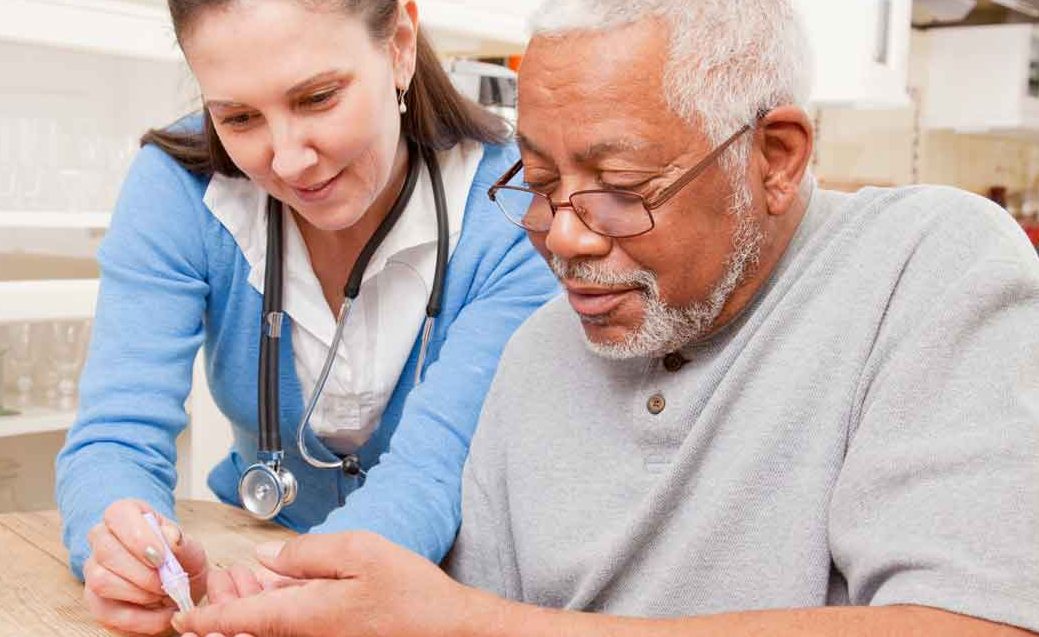What Is Diabetes?

Diabetes occurs when you can't make any or enough of the insulin your body needs to direct blood glucose to your cells. Here's what you should know.
When you wake up early for a morning run, most likely you eat breakfast, maybe orange juice and eggs, to give you energy. That food turns into blood glucose, also called blood sugar, in your blood. For blood glucose to move into your cells and fuel their work, you need a hormone made by your pancreas, insulin.
If all is in order, your body has all the insulin it needs to direct blood glucose to the cells, and it doesn’t accumulate in your blood. If your blood sugar level gets too high, you have diabetes.
YOU MIGHT ALSO LIKE: 8 of 10 People with Prediabetes Don’t Know They Have It
What is diabetes?
There are three main kinds of diabetes.
If you have type 1 diabetes, an autoimmune condition, your immune system has destroyed the cells in your pancreas that make insulin. You end up with zero insulin. Type 1 was once called juvenile diabetes because it usually shows up early in life, although it can appear at any age. You’ll need to take insulin every day.
If you have type 2 diabetes, which is far more common, your body does make insulin but not enough to meet your needs. This condition usually starts with insulin resistance, when muscle, liver, and fat cells don’t use insulin well, and require more than the normal amount. At first, your pancreas makes more insulin to keep up, but eventually it falls behind, and blood sugar accumulates in your blood.
Gestational diabetes develops in some women during pregnancy and often goes away after childbirth. You’ll be more likely to develop type 2 diabetes later, or you may already have it.
How common is diabetes?
The condition is common, and more so with age. More than 30 percent of Americans aged 65 or older have diabetes. Your chances increase during midlife, especially if you have a family history of diabetes and have extra belly fat.
The most important cause of diabetes is obesity. Other risk factors include high blood pressure, lack of exercise, depression, heart disease, a history of strokes, a low level of HDL (“good”) cholesterol, or a high level of triglycerides. Take this quick test to judge your own risk.
What are the dangers of diabetes?
Over time, high blood sugar can lead to heart disease, stroke, kidney disease, eye problems, nerve damage and pain, and dental problems.
What are the symptoms of diabetes?
The symptoms of type 1 diabetes tend to come on quickly, in weeks. With type 2, the signs may be so mild you don’t notice them. You may find out you have diabetes during an ordinary check-up when your blood sugar levels are tested, or if you have a heart attack.
Pay attention if you are:
- Increasingly thirsty and urinate more often
- Hungrier than usual (especially after a meal)
- Frequently tired
- Have blurred vision
- Experience numbness or tingling in your feet or hands
- Have sores that don’t heal
- Lose weight for no obvious reason
What is prediabetes?
About a third of Americans over the age of 20 have prediabetes, which means they’re at greater risk of progressing to type 2. Ask your doctor to measure your A1C, your average blood sugar level for the past two to three months. You have prediabetes if your score falls between 5.7 percent to 6.4 percent. At 6.5 percent you have diabetes.
To avoid developing type 2 diabetes, get your weight in the normal range, exercise for at least a half hour five days a week, and eat plenty of vegetables, whole grains, and lean protein. Stay away from white starches — white sugar and white flour — and processed sweets. For a boost, talk to your doctor about taking metformin, a diabetes medication, for prevention.
How can you reverse diabetes?
If you have type 1 diabetes, it’s a lifelong disease. If you have type 2, it’s important to eat less and become more active. Bariatric (weight-loss) surgery can also reverse type 2 diabetes.
Updated:
September 20, 2023
Reviewed By:
Janet O’Dell, RN